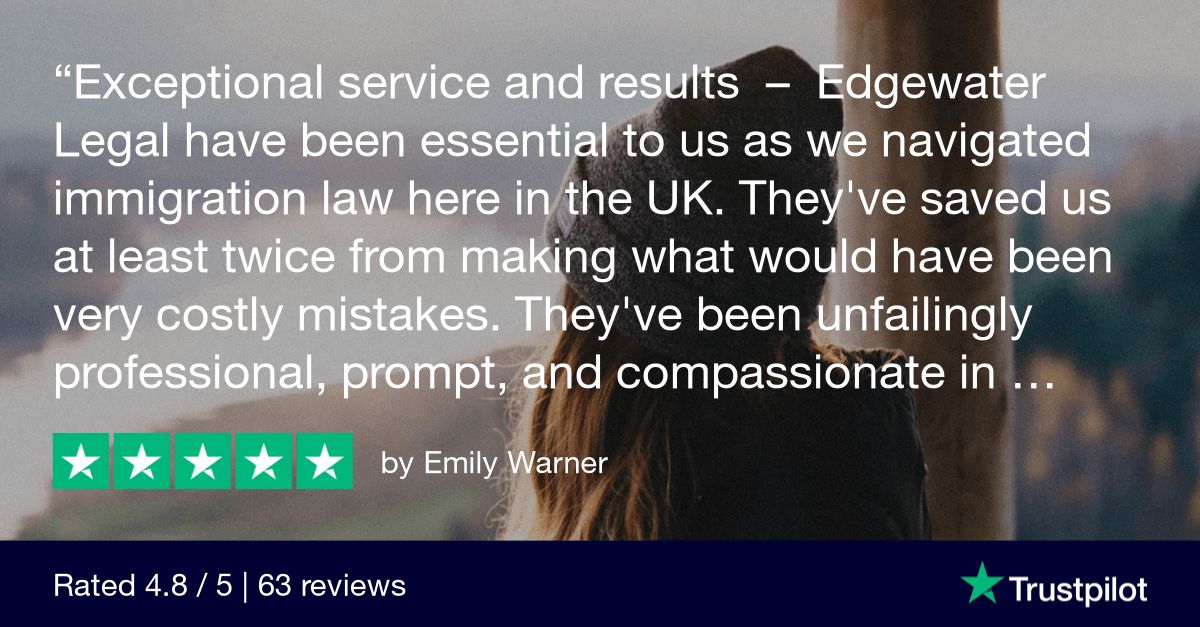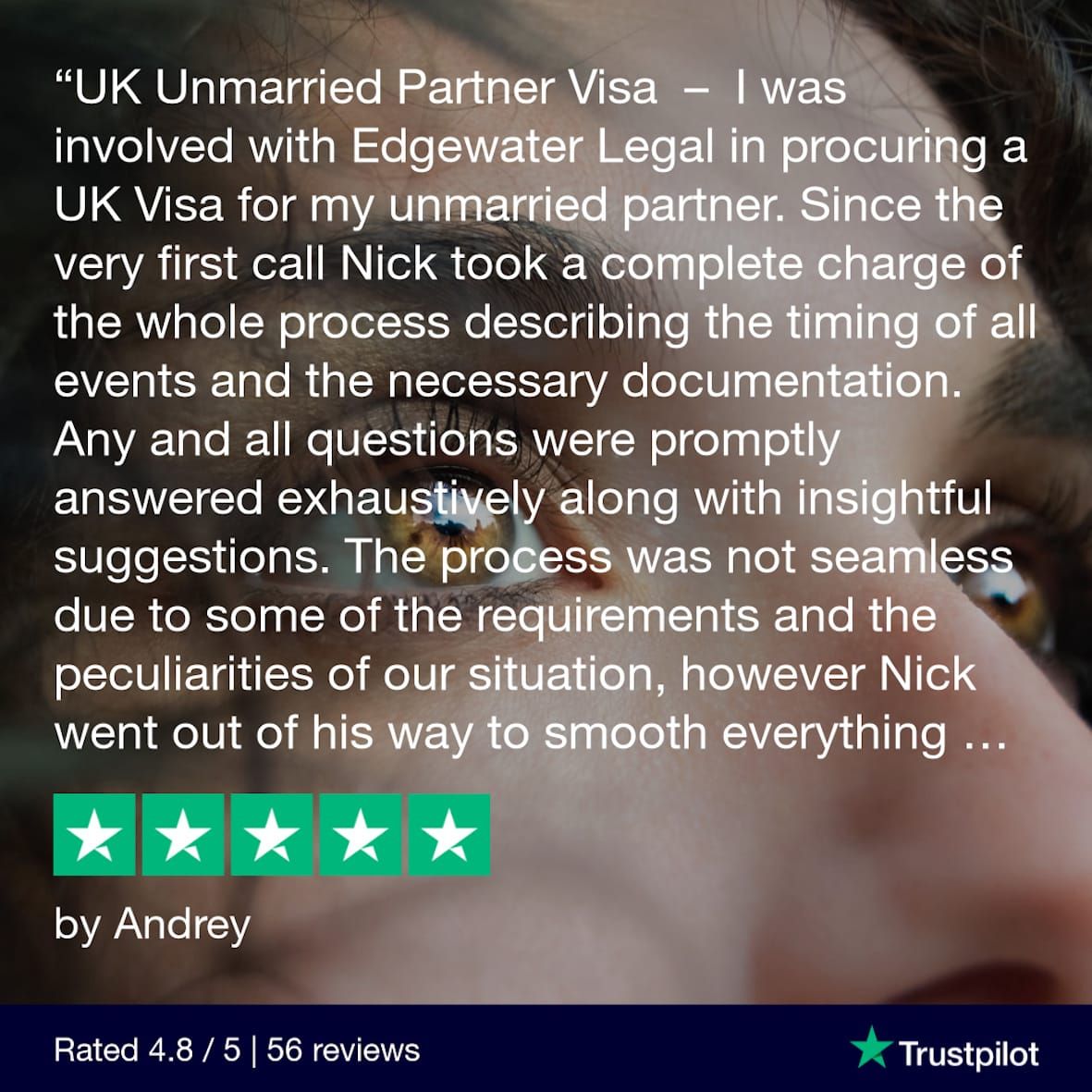
Evidencing 'genuine and subsisting' relationships


This post is for individuals making UK visa applications based on a relationship with a partner. It gives guidance and ideas as to what evidence might be collected to meet the 'genuine and subsisting relationship' requirement.
This is a sub post of our full guide on How to apply for a partner visa, which has further information on the partner visa application process and the minimum income requirement.
As ever, this is no substitute for legal advice. If you would like an experienced immigration lawyer to review the application before it is submitted, check out our one-off consultation service.
The requirement
In a spouse or unmarried partner visa application, applicants must show that they are in a ‘genuine and subsisting’ relationship with their partner in order to qualify for the visa to enter the UK.
The requirement must be met in both the initial visa application to enter the UK, and the extension application once the partner is already here.
Lawyers in this area sometimes see refusals on the grounds that a relationship is not a ‘genuine and subsisting’ one. Almost always, this isn’t because the relationship is not genuine, but because the applicant had not provided adequate or enough information (in the view of the deciding caseworker) with their application.
Remember: in any visa application, it is for the person relying on the existence of a relationship to prove any assertion made about it. The caseworker who looks at the application won’t normally do their own investigatory work on an applicant’s behalf.
In addition to this, it has often been said that there is a culture of disbelief at the Home Office which affects decision-making. In conjunction with scare-stories about ‘sham’ marriages undertaken for visa reasons, my advice to clients is to always provide as much information as possible about the relationship.
Applications should be prepared for the most cynical caseworker, having a bad day.

What does the Home Office say?
The Home Office produces guidance as to what they expect to see in these types of applications. If you are making your own application, this is worth reading. In the spouse visa guidance, the Home Office suggest the following evidence:
- A ‘current, long-term relationship’
- Co-habitation
- Children (including stepchildren or adopted), and shared responsibility for their upbringing
- Shared financial responsibilities, e.g. a joint mortgage/tenancy agreement, a joint bank account and/or joint savings, utility bills in both their names.
- Visits to each other’s home countries
- Plans for the future
Of course, many people do not meet these criteria. Don’t worry if this is the case, there are plenty of other ways of doing so which we will explore below.
Guidance from the Courts
Other important guidance comes from the courts. The leading case remains Goudey where the court found that
‘subsisting’ marriage meant that the matrimonial relationship must be continuing at the relevant time rather than just a formality
So what they mean there is that you need more than just a marriage certificate to satisfy the rules. However, they also went on to say that showing a ‘genuine and subsisting’ relationship
does not require the production of particular evidence of mutual devotion before entry clearance can be granted
Whilst this is comforting, and correct in law, my advice to clients is always – why take the risk?
The case of Goudey is a good example: although the couple eventually succeeded at court in December 2011, this was almost a year and a half after the original visa application was made.

How can I evidence my relationship?
The first point to make is that every relationship is different, and the nature of the evidence that you will need to collect will very much depend on the nature of the relationship. However, there is a broadly similar process which all applicants should go through.
I tend to start by asking both applicant and sponsor to describe their relationship as fully as they can, and this might be documented in a statement from each of them. Once we have established what the relationship consists of, we can then work back from that and consider how to evidence each part of it.
In my view it is best to start with the Home Office guidance and then, to the extent that the relationship is not documented with that evidence, expand beyond it.
The Home Office List
As referred to above, the Home Office provides guidance on what evidence it would expect to see from a couple in a ‘genuine and subsisting relationship’. Let’s look at each in turn (leaving the first item aside, to which we will return below):
2. Co-habitation – the couple have been or are cohabiting and are able to provide satisfactory evidence of this.
Evidence of this might include
- Tenancy agreement with both names included
- Letter from the landlord of letting agent, confirming that the couple are both residing at a particular address
- Any correspondence sent to the applicant at the same address as the sponsor
In general, anything from a government department or local government will be given weight. This includes evidence from schools, hospitals, local council etc. The same applies to evidence from known institutions (such as banks, utility companies). In the event that these cannot be provided, think about
- Delivery records to the address in either person’s name. For example, an Amazon or supermarket account print-out showing deliveries
- Statements from neighbour(s) who can confirm residency. These can be provided in the form of a letter, confirming the date that the neighbour was aware that the couple moved in, and they continue to live at the property etc. The letter should contain the full address and contact details of the neighbour.
3. Children - the couple have children together (biological, adopted or step-children) and shared responsibility for them
If a couple have a child together and can provide a birth certificate where both are named as parents then this is strong evidence. However, in the event that this not available, or because one or both of the parents are not biological parents, the following evidence might be provided:
- Letter from nursery/school confirming that both parents have dropped the children off
- Letter from GP confirming that both parents have attended appointments, or listed as Next of Kin in medical records
- Letters from organisations (e.g. local football club/institutions (e.g. church) which can confirm you have an active role in their lives)
- Evidence from the children themselves. For younger children, this could be as simple as drawings or paintings of the family, or a hand-written letter from older children.
4. Shared financial responsibilities
This is usually the strongest evidence of a genuine and subsisting relationship. The guidance suggests the following documents which might be provided:
- a joint mortgage/tenancy agreement
- a joint bank account and/or joint savings
- utility bills in both names
If these are not available, then you might also consider providing the following:
- evidence that one party has been listed as a beneficiary for life insurance/assurance policy
- evidence of financial support from one party to another (e.g. payments from one bank account to another)
5. Visits to each other’s country – the partner and/or applicant have visited the other’s home country and family and are able to provide evidence of this
The guidance states the fact that an applicant has never visited the UK must not be regarded as a negative factor, but it is a requirement of the rules that the couple have met in person. Evidence of this might include
- Evidence of flights to each other’s country of residence, such as flight booking confirmations to a personal email addresses
- Letters or statements from close family members (such as parents) confirming the visits which have taken place, especially if the they provided the accommodation during those visits
- Photographs of the visits (more on photographs below)
6. Plans for the future - the couple have made definite plans concerning the practicalities of the couple living together in the UK
There is a wide range of evidence that might be provided here, very much depending on the individual circumstances of the relationship. Generally, evidence touching on the following might be provided
- Accommodation – where will the couple live? A letter from the owner of the property in which the couple will be staying should anyway be provided to satisfy the adequate accommodation and maintenance requirement
- Finances – how will the couple cope financially? If the applicant has a firm offer of employment, a letter confirming this would be useful
- For those with children, where will they go to nursery/school? Letters or agreements confirming a child’s place can be provided, or invitations to open days
Of course, many applicants cannot satisfy many of these conditions. For example, a young couple without children, applying from abroad, and who have never lived together (either in the UK or outside of it), will struggle to provide evidence in most of these areas.
But don't lose hope!

Other Evidence
As a catch-all, the guidance confirms that the Home Office will accept ‘satisfactory evidence’ of a current, long-term relationship. No examples are provided in the guidance to explain what ‘satisfactory’ means. The following categories of evidence are ones my clients have relied upon in many a successful spouse visa application.
Communication
This is most obvious evidence to show that a couple is in a genuine and subsisting relationship, especially in our increasingly online and digital world. It is difficult to argue with a downloaded WhatsApp or Facebook conversation where hundreds or thousands of messages have been exchanged between the parties over the relevant period.
Evidence of calls over Skype or other platforms or apps can also be used to demonstrate frequent contact. In addition, emails exchanged between the parties can also be collated into PDFs and submitted to demonstrate ongoing contact. Essentially, any other methods of communication which can be documented (including ye olde hand-written letters, love poems etc) can be submitted if needed.
Statements (from the couple)
I always recommend that clients provide a statement in support of their applications, even if brief. Whilst they may not provide a great deal of evidential weight, they are important because they provide a narrative structure to the relationship, and can take the decision-maker on a guided tour of the evidence that has been submitted.
It does not need to be War & Peace, but it should give a basic sketch of the relationship (how you met, how the relationship developed etc) and touch on all of the points in the Home Office list to the extent they apply. This is also a good place to explain your plans for the future.
Importantly, the statement should highlight any of the deficiencies of the evidence which has been provided. For example, if you have been cohabiting with your partner, but cannot provide evidence (e.g. utility bills sent to one person, rather than both), this should be explained and reasons given.
Clients often think there is magic to a statement, but there is not. It should contain the following bare essentials:
- name, address, date of birth, and nationality of the person giving the statement
- statement of truth (at the end, you write: ‘I confirm that the details contained in this statement are true and correct to the best of my knowledge and belief’)
- signature of the person giving the statement next to print of their name
- date of the signature
I like to include photographs within the statement if clients have provided them in a digital format.

Statements (from others)
Statements from third parties (family members, close friends) are only really necessary if you are struggling to gather the other evidence listed above, or where there is a specific purpose to the statement (e.g. from a family member confirming that the couple visited).
These statements should be accompanied by a copy of the information page of the statement giver’s passport, and contact details (email address, mobile number and address) so the Home Office can verify the contents of the statement if they want to. Points to note about these statements:
- Don’t have to be long (1-2 pages)
- Witnesses to be of good character (no criminal convictions, or other character issues)
- Preferably (but not necessarily) British, or alternatively settled immigration status
- Detail how the witness knows you, how long for, in what capacity, personal contact with the couple, and any other details (feel free to add colour – doesn’t have to be formal)
Photographs – quality not quantity
Photographs have long been a staple of spouse visa and immigration applications involving proof of a relationship. My advice to clients is usually that 40-50 well presented, properly explained photographs are better than several hundred.
A key thing to remember is that the Home Office don’t know what you look like, so it is important that you help them out: photos with captions, preferably date and location stamped (some mobile phones can do this) are therefore better than those without.
Miscellany – completely unique to the relationship
As mentioned at the outset, every relationship is different. There may be something in your relationship which is easy to show, and for which you already have plenty of evidence – for example, evidence of your wedding, invitations, thank you cards, gift lists or even print-outs from a wedding website.
If this is the case, and you feel you are struggling to demonstrate your relationship using the more mainstream criteria laid out above, then do not feel limited to the evidence listed here if you feel there is other documentation or information which would help the Home Office arrive at a sustainable decision.
Main image credit: Photo by Jamie Street on Unsplash